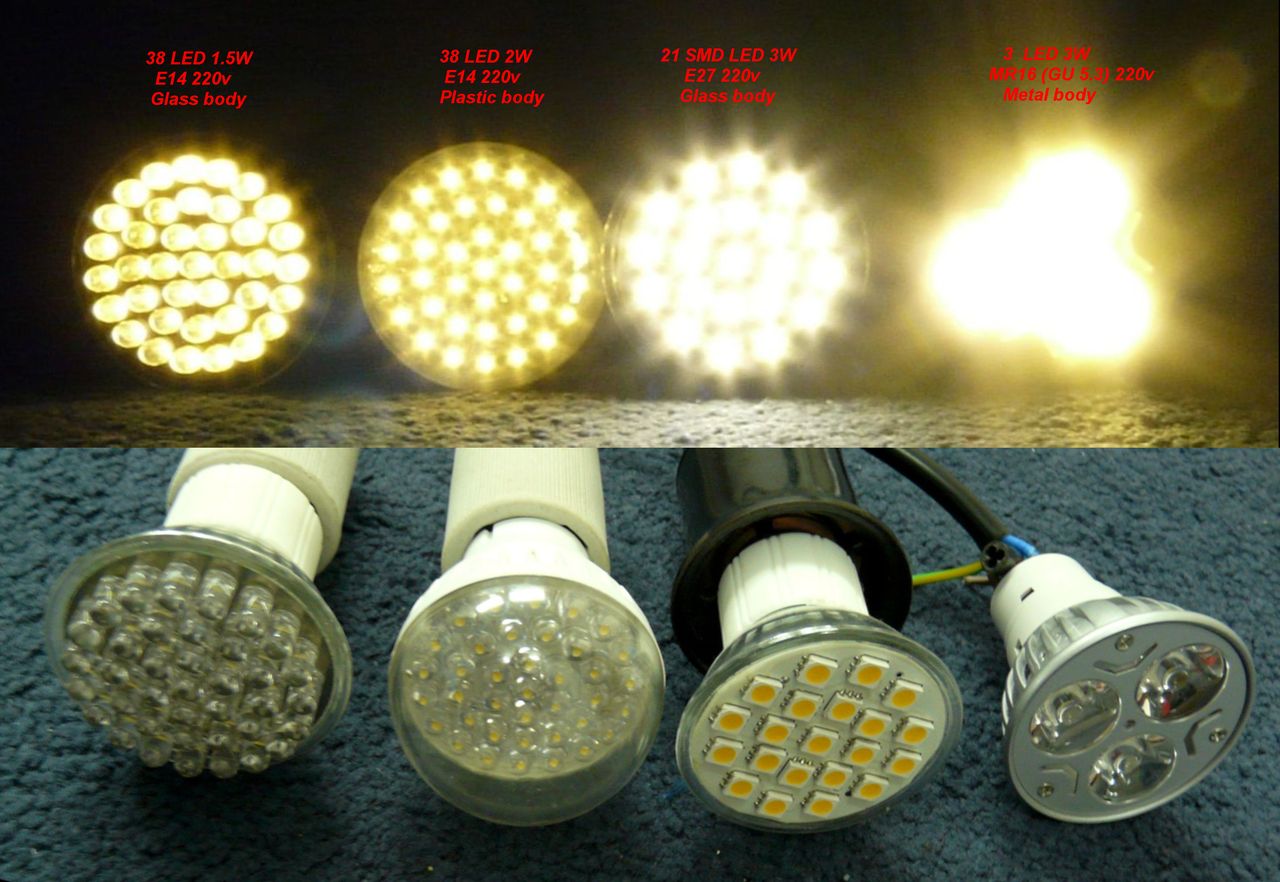LED light are coming to replace both incandescent and fluorescent bulbs. LEDs are far more energy efficient, produce less heat, do not explode to sharp glass pieces and do not contain hazardous chemicals like quicksilver, which is present in fluorescent bulbs.
Household LED bulbs come with standard base sizes, ranging from common E14 and E27 to MR16, GU10 and more exotic ones.

The LEDs themselves are also different. Some of them have a small lens casing, which looks like a drop of transparent plastic. These are those LEDs that are used in TV standby lights and for other indication. The problem is they are not quite suitable for high-power output, since they overheat and burn out really fast. If after a burn the LED remains a capacitor, then all the other LEDs on board will still receive electric current and the bulb will continue to work. If the LED burns out and does not transfer electric current anymore, other LEDs on the panel will stop to produce light.
The caseless, or SMD lights, are designed specifically for light output. They also come in bigger sizes. The size of the LED represents the maximum power it can transfer into light, and is usually indicated by a compound number like 2030 or 5050. The two parts – 20 and 30 or 50 and 50 – represent the dimensions of the LED in metric system. Imperial units are also used, so some LEDs have double markings – in metric and imperial units.
The more power goes to a led, the more intense light in produces. One incandescent or fluorescent bulb of a specific wattage shines brighter, than two less powerful bulbs, even if the combined wattage is the same. Same rule applies to LED bulbs: the less diodes for the same wattage, the brighter light you get.
So, 3 LED 3W led bulb is better than 21 LED 3W bulb which is better than 38 LED 3W bulb, even though they consume the same amount of power – 3W.